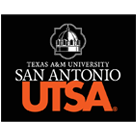Document Types
Individual Presentation
Location
UTSA Downtown- La Villita
Start Date
2-23-2024 3:30 PM
End Date
2-23-2024 4:00 PM
Track
Language Attitudes/Ideologies
Abstract
“What are the students saying?” examines students’ reactions towards critical language awareness-laden media presented in the Spanish as a heritage language (SHL) classroom. Critical language awareness (CLA) emphasizes how “language practices are invested with power relations and ideological processes which people are often unaware of” (Fairclough, 1992, p.7). In the classroom, CLA manifests in ways that “helps students understand how language prejudice is intertwined with broader social hierarchies and power relations. Further, it seeks to promote students’ development of critical resources for resisting and challenging those hierarchies” (Leeman 2018, p. 348). The present classroom-based study furthers CLA research by advancing pedagogical approaches and promoting contemporary media in the classroom as a generative source for CLA discussions. Through the incorporation of short videos taken from TikTok, coded with various CLA themes (based on current literature), critical conversations were held - reflecting an innovative intervention and perspective. This strategy incorporates criticality in the classroom in an approachable, contemporary, and accessible way which reveals CLA level in conversation, through hearing students’ voices. These voices provide insight into CLA strengths and areas of development for students - furthering pedagogical strategy exploration. Findings suggest that students have high levels of CLA, that TikTok is an effective way to present CLA in the classroom, and group conversations demonstrate student ability to enter into critical discourse without heavy intervention from the instructor. This implementation of CLA material was effective, yet suggests more in-depth reflection/time and exploration of a specific topic (or a video) could potentially be beneficial, engaging, and useful for the student. Lastly, this investigation is an attestation to the sense of belonging and community that is generated in the SHL classroom. Students openly shared in group conversations, even when holding opposing opinions. The community of support that is fomented in the SHL classroom is crucial.
Recommended Citation
Henderson, Sarah, "Unveiling Critical Language Awareness through TikTok: Fostering Community, Dialogue and Student Perspectives in the Spanish Heritage Language Classroom" (2024). 11th National Symposium on Spanish as a Heritage Language. 18.
https://digitalcommons.tamusa.edu/heritage_spanish/SCHEDULE/Friday/18
Included in
Anthropological Linguistics and Sociolinguistics Commons, Bilingual, Multilingual, and Multicultural Education Commons, Digital Humanities Commons, Latin American Languages and Societies Commons, Spanish and Portuguese Language and Literature Commons
Unveiling Critical Language Awareness through TikTok: Fostering Community, Dialogue and Student Perspectives in the Spanish Heritage Language Classroom
UTSA Downtown- La Villita
“What are the students saying?” examines students’ reactions towards critical language awareness-laden media presented in the Spanish as a heritage language (SHL) classroom. Critical language awareness (CLA) emphasizes how “language practices are invested with power relations and ideological processes which people are often unaware of” (Fairclough, 1992, p.7). In the classroom, CLA manifests in ways that “helps students understand how language prejudice is intertwined with broader social hierarchies and power relations. Further, it seeks to promote students’ development of critical resources for resisting and challenging those hierarchies” (Leeman 2018, p. 348). The present classroom-based study furthers CLA research by advancing pedagogical approaches and promoting contemporary media in the classroom as a generative source for CLA discussions. Through the incorporation of short videos taken from TikTok, coded with various CLA themes (based on current literature), critical conversations were held - reflecting an innovative intervention and perspective. This strategy incorporates criticality in the classroom in an approachable, contemporary, and accessible way which reveals CLA level in conversation, through hearing students’ voices. These voices provide insight into CLA strengths and areas of development for students - furthering pedagogical strategy exploration. Findings suggest that students have high levels of CLA, that TikTok is an effective way to present CLA in the classroom, and group conversations demonstrate student ability to enter into critical discourse without heavy intervention from the instructor. This implementation of CLA material was effective, yet suggests more in-depth reflection/time and exploration of a specific topic (or a video) could potentially be beneficial, engaging, and useful for the student. Lastly, this investigation is an attestation to the sense of belonging and community that is generated in the SHL classroom. Students openly shared in group conversations, even when holding opposing opinions. The community of support that is fomented in the SHL classroom is crucial.


